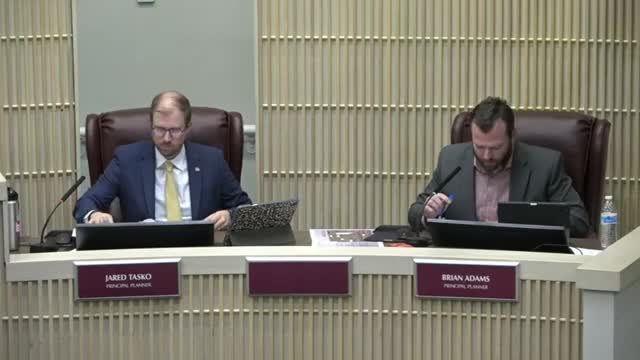Controversial Lake Las Vegas Development Sparks Community Concerns
June 15, 2024 | Henderson, Clark County, Nevada

This article was created by AI summarizing key points discussed. AI makes mistakes, so for full details and context, please refer to the video of the full meeting. Please report any errors so we can fix them. Report an error »

In a recent government meeting, a proposal for a significant residential development in the Lake Las Vegas North Shore area was discussed, involving a four-part request from the applicant, Tri Point. The requests include changing the land use designation from medium density to low density residential, removing portions of the site from existing master plans, amending the zoning to incorporate the site into the Lake Las Vegas North Shore master plan, and a tentative map request for a 53-lot residential subdivision.
The proposal was presented by Tom Amick, representing Tri Point, who emphasized that the site is the last remaining vacant parcel in the Rainbow Canyon North Shore area. Currently permitted for 152 lots, the new plan would reduce this to 53 lots, with lot sizes ranging from 6,600 to 9,200 square feet, aligning with the existing neighborhood's characteristics.
Commissioner Lewis disclosed a potential conflict of interest due to his employer's previous land sale to Tri Point, but stated it would not affect his judgment on the matter. Staff recommended approval of the proposal.
During the public hearing, several residents voiced concerns regarding the development's impact on their views, traffic, and potential construction noise. Specific issues raised included the fate of a berm that currently obstructs views, the possibility of blasting during construction, and the access points for the new development. Residents expressed worries about increased traffic and safety, particularly on nearby roads.
In response, Amick assured attendees that no blasting would occur and clarified that the maintenance road would not be accessible to residents, serving solely for city utility access. He also addressed concerns about the height of the new homes relative to existing properties, stating that the new lots would be positioned to minimize disruption.
The timeline for the project is estimated to begin within 8 to 12 months, pending necessary approvals and civil improvement plans. The meeting concluded with a sense of cautious optimism from the developers, while residents remained vigilant about the potential changes to their community.
The proposal was presented by Tom Amick, representing Tri Point, who emphasized that the site is the last remaining vacant parcel in the Rainbow Canyon North Shore area. Currently permitted for 152 lots, the new plan would reduce this to 53 lots, with lot sizes ranging from 6,600 to 9,200 square feet, aligning with the existing neighborhood's characteristics.
Commissioner Lewis disclosed a potential conflict of interest due to his employer's previous land sale to Tri Point, but stated it would not affect his judgment on the matter. Staff recommended approval of the proposal.
During the public hearing, several residents voiced concerns regarding the development's impact on their views, traffic, and potential construction noise. Specific issues raised included the fate of a berm that currently obstructs views, the possibility of blasting during construction, and the access points for the new development. Residents expressed worries about increased traffic and safety, particularly on nearby roads.
In response, Amick assured attendees that no blasting would occur and clarified that the maintenance road would not be accessible to residents, serving solely for city utility access. He also addressed concerns about the height of the new homes relative to existing properties, stating that the new lots would be positioned to minimize disruption.
The timeline for the project is estimated to begin within 8 to 12 months, pending necessary approvals and civil improvement plans. The meeting concluded with a sense of cautious optimism from the developers, while residents remained vigilant about the potential changes to their community.
View full meeting
This article is based on a recent meeting—watch the full video and explore the complete transcript for deeper insights into the discussion.
View full meeting